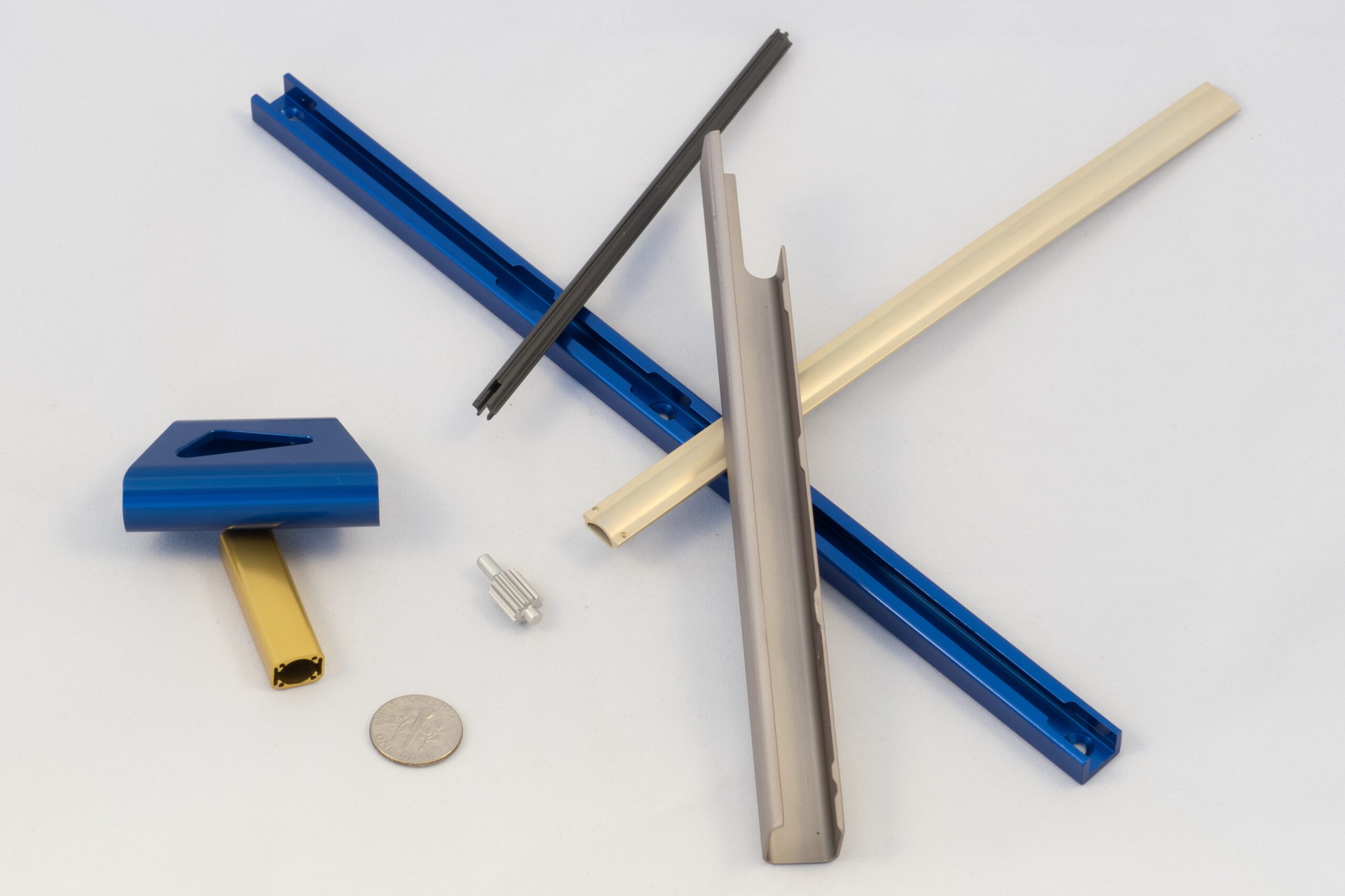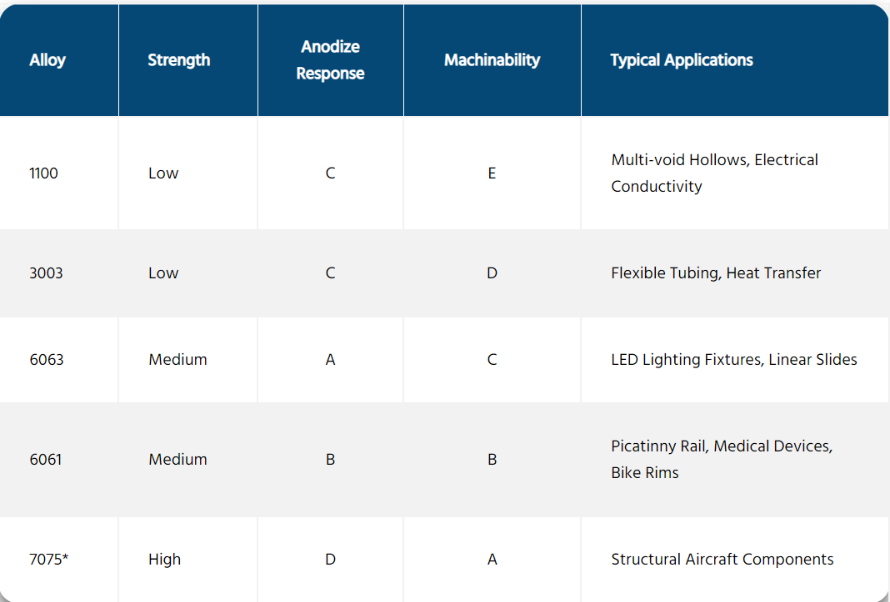When it comes to aluminum extrusions and tubing both durability and aesthetics can be enhanced in a variety of ways. Whether you’re designing components for industrial machinery, medical products, or more complex consumer products, there are a number of options to consider to heighten durability without sacrificing aesthetics. As experts in our field, we can share the options a designer has to enhance both the durability and aesthetic appeal of aluminum tubing and extruded shapes. From the initial design phase to the final production, we will delve into the various techniques and processes that can be employed to achieve optimal results that will last.
Designing for Durability: Aluminum Alloy Selection
Choosing the right alloy and material treatment significantly enhances the durability of custom aluminum products. Different aluminum alloys offer va
rying levels of strength, corrosion resistance, and other properties based on the needs of the end user. Through careful selection, designers can tailjhkhjjkor the material to suit the specific application requirements.
Designing for Durability: Coatings
- Anodizing
Anodizing is an electro-chemical process that forms a durable, oxide coat on the surface of aluminum extrusions. If durability is a crucial factor in the success of your extruded aluminum tube or extruded shape, hard coat anodizing (Type III) should be considered. A coating of up to .004” can be applied. The coating can withstand thousands of cycles of use and typical applications are linear slides, hydraulic cylinder wear surfaces, and actuating cams.
Commercial anodizing (Type II) is a good choice for industrial, medical, and recreational applications. Aluminum bike rims, linear slides and handguards are good examples of anodized aluminum extrusions. The anodized layer prevents oxidation and protects the aluminum from scratches. Type II anodizing coating thickness ranges from .0001″-.0010″. Unlike Type III, Type II commercial anodize can be used with a wide variety of colored organic dyes.
Mechanical finishes such as brushing, vibratory deburring, and bead blasting can be applied prior to anodizing to further enhance the extruded aluminum’s appearance.
- Paints
Wet and powder paints are also commonly applied to aluminum extrusions to enhance its cosmetic appearance and protect the aluminum from the elements or abrasion. With both types, particles of electrically charged paint adhere to electrically grounded surfaces of the aluminum and are then heated in an oven to fuse the paint into a smooth coating. Paints come in a wide variety of architectural, UL-rated and UV-resistant options.
- Chemical Conversion Coating
Chem film coating (aka Alodine or Iridite ) is a process in which a chromate coating is used to protect the aluminum from corrosion. Another benefit is the coated aluminum still maintains conductivity when coated. Chem films are also used to improve adhesion of paints or primers. The coatings come in RoHS-compliant options for non-industrial applications. RoHS-compliant versions are clear after application, while non-RoHS versions impart a yellowish hue.
Collaboration and Expertise
To fully leverage the benefits of custom aluminum fabrication, collaboration with an experienced manufacturer like Profile Precision Extrusion is essential. Our expertise in custom aluminum extrusions, fabrication, and coatings allows for seamless integration of design, engineering, and manufacturing processes. From the initial concept to the final product, working with knowledgeable professionals ensures that the manufacturing process is optimized for both durability and aesthetics. The guidance and support of an experienced partner can result in exceptional aluminum products that surpass expectations in terms of both functionality and visual appeal. Embrace the potential of aluminum and collaborate with Profile Precision Extrusion to bring your vision to life with the perfect blend of durability and aesthetics. Call us today to get a quote.



